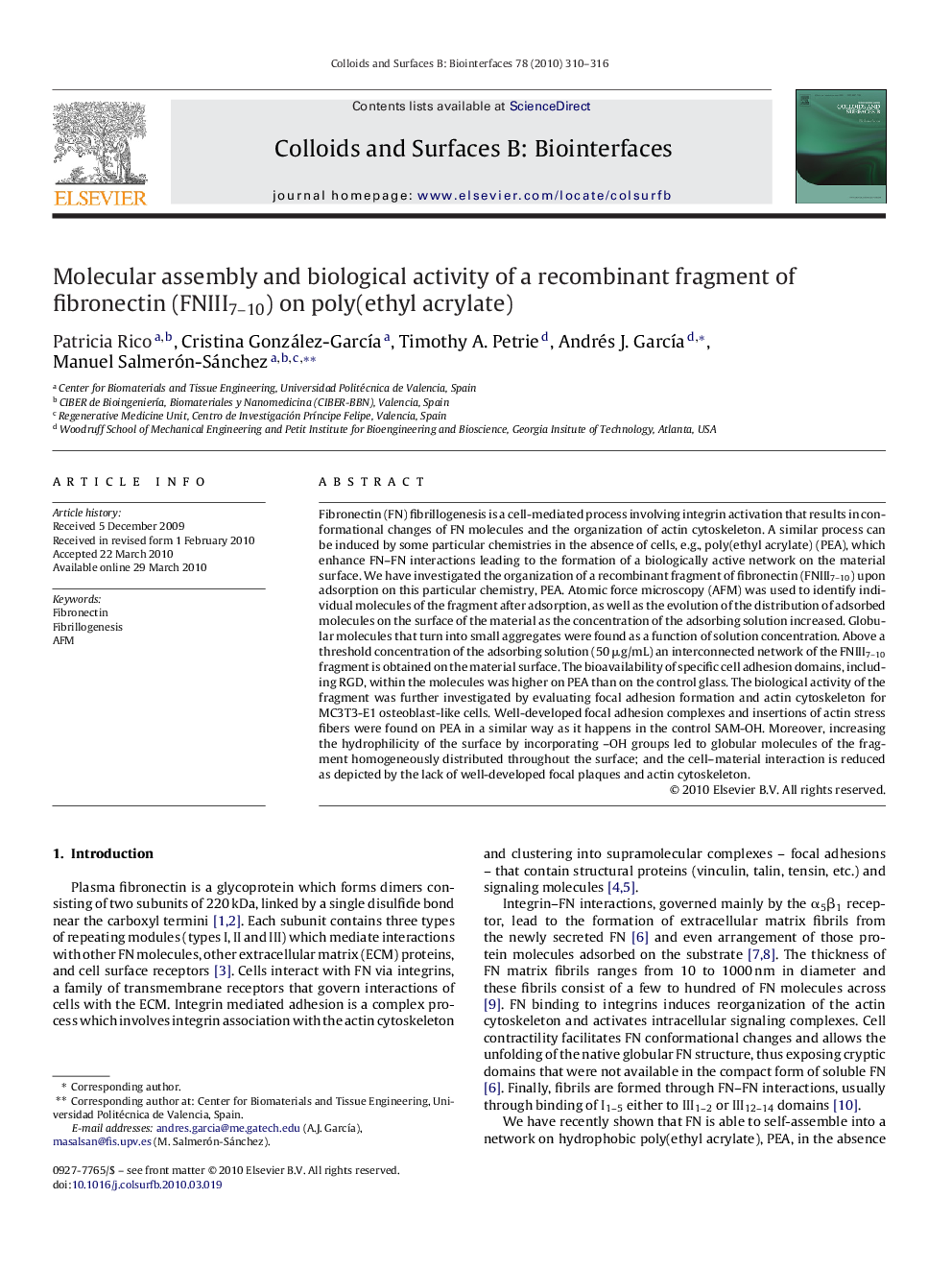| کد مقاله | کد نشریه | سال انتشار | مقاله انگلیسی | نسخه تمام متن |
|---|---|---|---|---|
| 601742 | 879952 | 2010 | 7 صفحه PDF | دانلود رایگان |

Fibronectin (FN) fibrillogenesis is a cell-mediated process involving integrin activation that results in conformational changes of FN molecules and the organization of actin cytoskeleton. A similar process can be induced by some particular chemistries in the absence of cells, e.g., poly(ethyl acrylate) (PEA), which enhance FN–FN interactions leading to the formation of a biologically active network on the material surface. We have investigated the organization of a recombinant fragment of fibronectin (FNIII7–10) upon adsorption on this particular chemistry, PEA. Atomic force microscopy (AFM) was used to identify individual molecules of the fragment after adsorption, as well as the evolution of the distribution of adsorbed molecules on the surface of the material as the concentration of the adsorbing solution increased. Globular molecules that turn into small aggregates were found as a function of solution concentration. Above a threshold concentration of the adsorbing solution (50 μg/mL) an interconnected network of the FNIII7–10 fragment is obtained on the material surface. The bioavailability of specific cell adhesion domains, including RGD, within the molecules was higher on PEA than on the control glass. The biological activity of the fragment was further investigated by evaluating focal adhesion formation and actin cytoskeleton for MC3T3-E1 osteoblast-like cells. Well-developed focal adhesion complexes and insertions of actin stress fibers were found on PEA in a similar way as it happens in the control SAM-OH. Moreover, increasing the hydrophilicity of the surface by incorporating –OH groups led to globular molecules of the fragment homogeneously distributed throughout the surface; and the cell–material interaction is reduced as depicted by the lack of well-developed focal plaques and actin cytoskeleton.
Journal: Colloids and Surfaces B: Biointerfaces - Volume 78, Issue 2, 1 July 2010, Pages 310–316